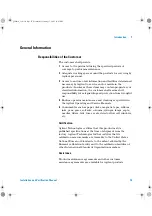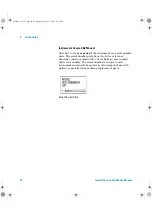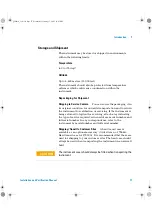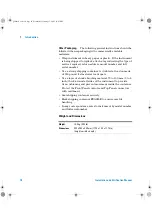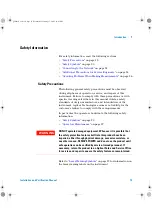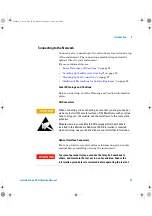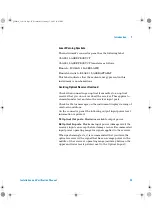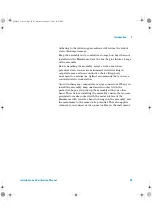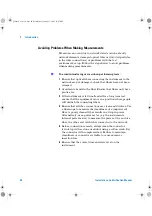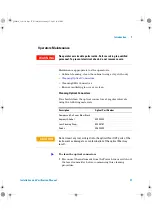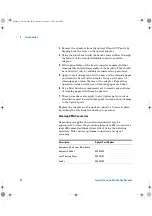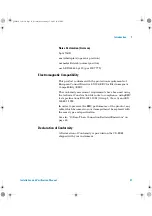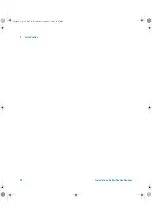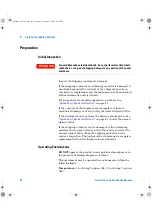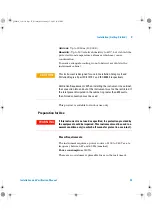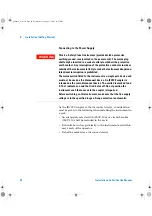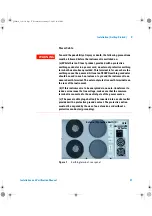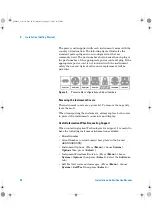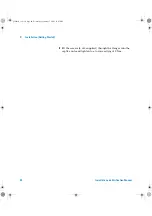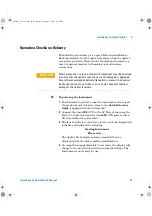
26
Installation and Verification Manual
1
Introduction
Avoiding Problems When Making Measurements
Bit errors can occur due to network defects (such as faulty
network elements, damaged optical fiber or dust/dirt particles
in the fiber connections) or problems with the test
environment/setup. Follow the steps below to avoid problems
when making measurements.
1
Ensure that optical fibers connecting the instrument to the
network are not damaged - check that fibers have not been
crimped.
2
Avoid acute bends in the fiber. Ensure that fibers only have
gentle arcs.
3
If the instrument is left unattended for a long term test,
ensure that the equipment is not in a position where people
will disturb the connecting fibers.
4
Ensure that all fiber connections are clean and dirt-free. Use
a fiberscope to measure the cleanliness of a (unpowered)
fiber. A poorly cleaned fiber results in a drop in power.
Alternatively, use a power meter (e.g. the instrument’s
internal power meter) to measure the power at the end of a
fiber, the other end of which is connected to the network.
5
Before connection is made, always clean the connector
ferrule tip with acetone or alcohol using a cotton swab. Dry
the connector with compressed air. Failure to maintain
cleanliness of connectors is liable to cause excessive
insertion loss.
6
Ensure that the correct time and date is set on the
instrument.
To avoid introducing errors when performing tests:
panther3_iv.book Page 26 Wednesday, January 15, 2003 12:03 PM




